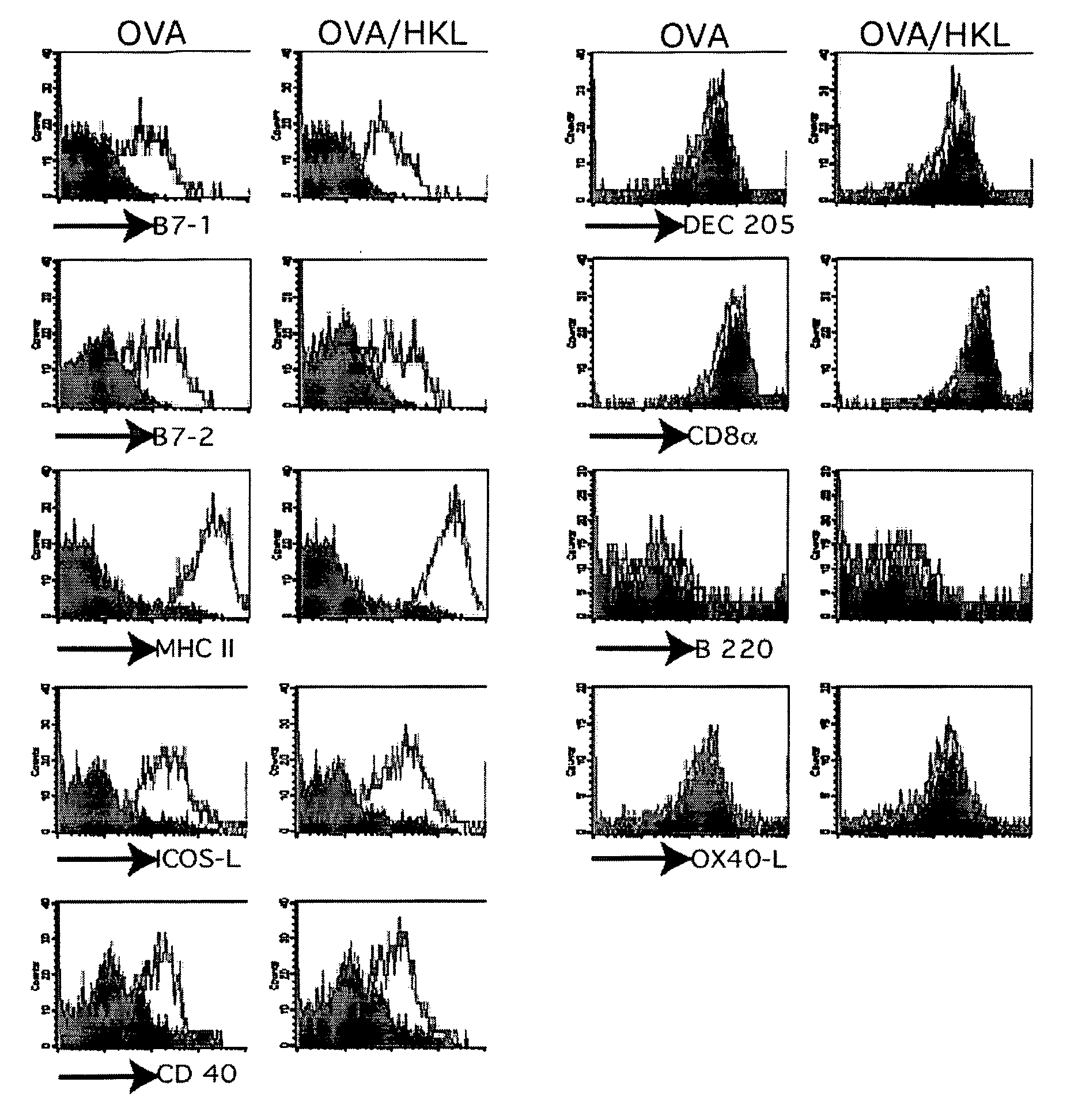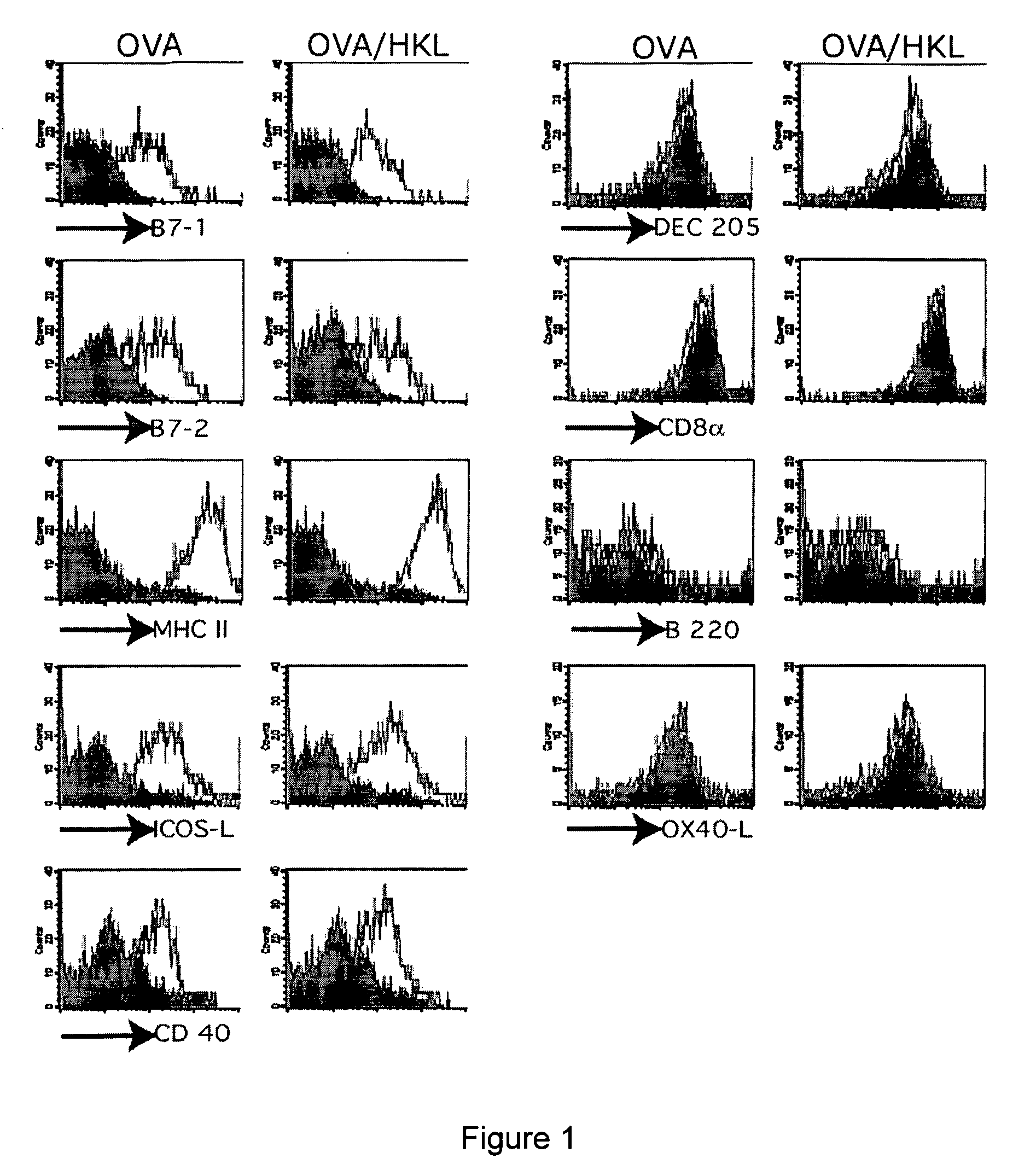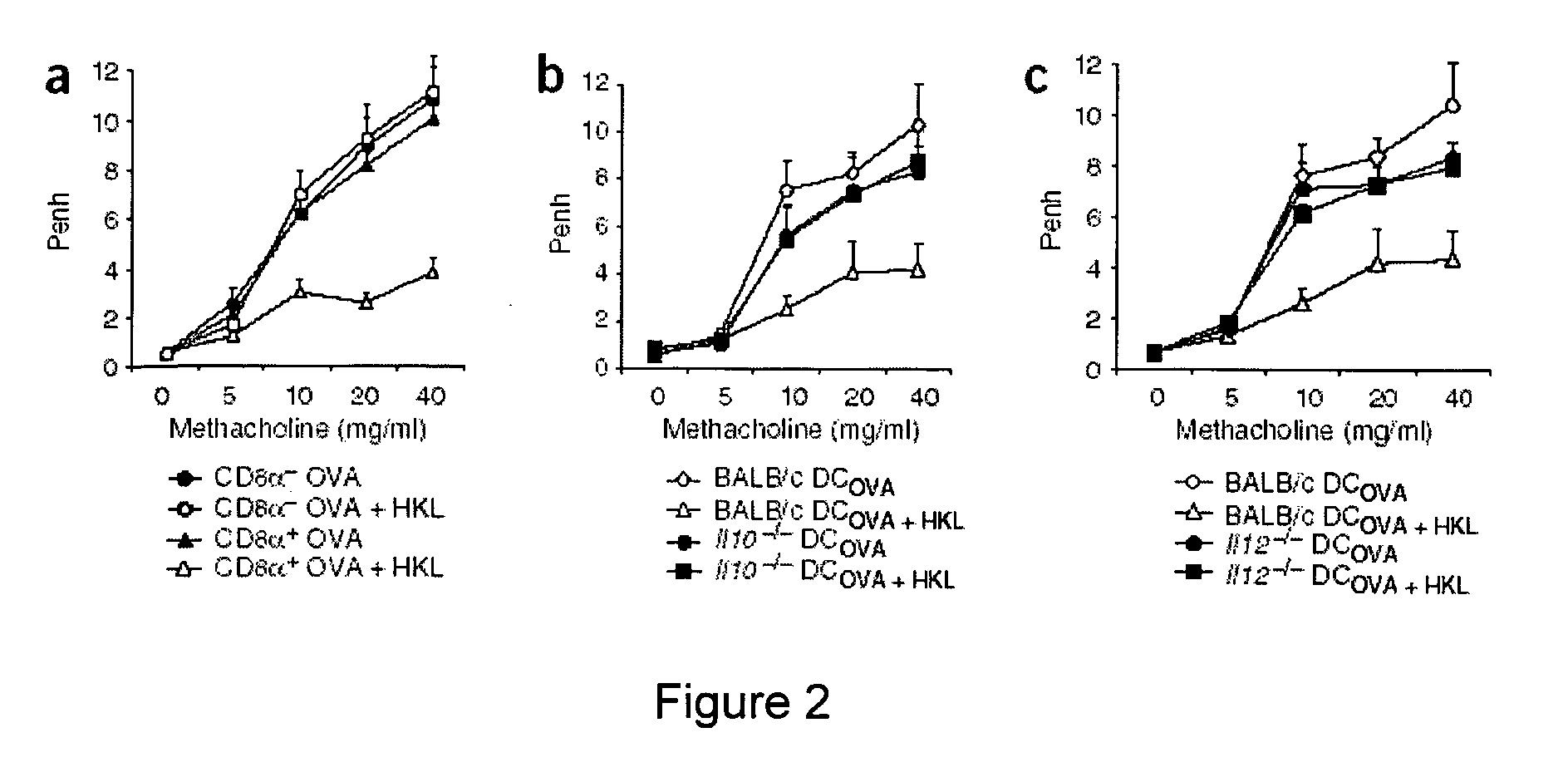Production And Therapeutic Uses Of Th1-Like Regulatory T Cells
a technology of regulatory t cells and th1like cells, which is applied in the field of production and therapeutic use of th1like regulatory t cells, can solve the problems of incomplete understanding of the full range of adaptive tsub>r /sub>cells that exist, and the clinical application of tsub>r /sub>cells has not been fully realized, so as to inhibit the development of allergen-induced airway hyper-reactivity, block proliferation and cytokin
- Summary
- Abstract
- Description
- Claims
- Application Information
AI Technical Summary
Benefits of technology
Problems solved by technology
Method used
Image
Examples
examples
[0105]The following examples are put forth so as to provide those of ordinary skill in the art with a complete disclosure and description of how to make and use the subject invention, and are not intended to limit the scope of what is regarded as the invention. Efforts have been made to ensure accuracy with respect to the numbers used (e.g. amounts, temperature, concentrations, etc.) but some experimental errors and deviations should be allowed for. Unless otherwise indicated, parts are parts by weight, molecular weight is average molecular weight, and pressure is at or near atmospheric.
Materials and Methods
[0106]Mice. BALB / c and IL-12-deficient mice were purchased from The Jackson Laboratory. IL-10-deficient mice, purchased from The Jackson Laboratory, had a C57BLU6 background and were backcrossed for ten generations to BALB / c in our laboratory. Rag2− / − breeder mice transgenic for an OVA-specific TCR (DO11.10) were provided by A. K. Abbas (Department of Pathology, University of Cal...
PUM
| Property | Measurement | Unit |
|---|---|---|
| volume | aaaaa | aaaaa |
| temperature | aaaaa | aaaaa |
| concentrations | aaaaa | aaaaa |
Abstract
Description
Claims
Application Information
 Login to View More
Login to View More - R&D
- Intellectual Property
- Life Sciences
- Materials
- Tech Scout
- Unparalleled Data Quality
- Higher Quality Content
- 60% Fewer Hallucinations
Browse by: Latest US Patents, China's latest patents, Technical Efficacy Thesaurus, Application Domain, Technology Topic, Popular Technical Reports.
© 2025 PatSnap. All rights reserved.Legal|Privacy policy|Modern Slavery Act Transparency Statement|Sitemap|About US| Contact US: help@patsnap.com



